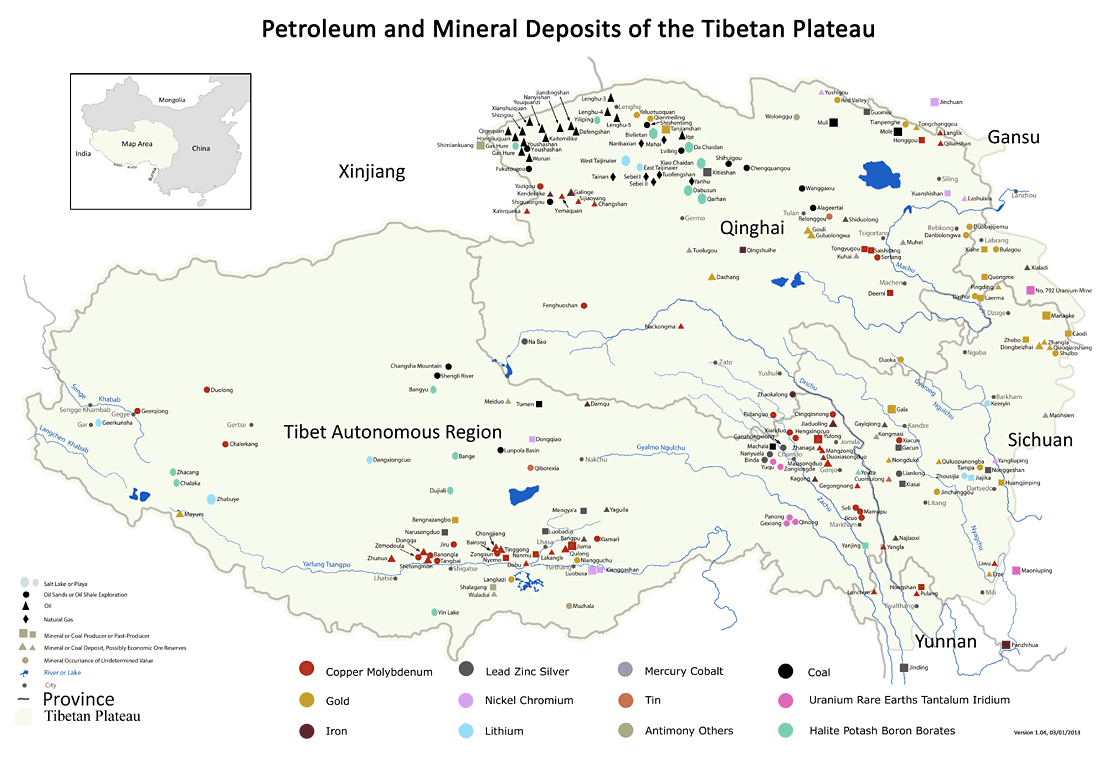|
|
|
Potentially Massive Oil and
Gas Find in Tibet
 Stratfor September 5, 2001 Chinese researchers have discovered massive new gas and oil deposits totaling an estimated 4 billion to 5.4 billion tons in Tibet in southwestern China, the newspaper China Daily reported. The estimates, though tentative, will likely aid China's attempts to increase foreign interest and investment in its western regions, which in turn will strengthen Beijing's control across the country. The estimate of the deposits' size is highly speculative, however, and more exploration will be necessary to determine the true volume. Beijing likely exaggerated the total in an effort to encourage foreign companies to invest in oil exploration and infrastructure in western China, as this would aid its controversial "Go West" development program. By attracting more foreign money for the program, Beijing could silence angry voices in eastern China as well as tighten its grip on the western regions.The Qiantang deposits, if estimates are accurate, represent a mother lode of oil and gas. They potentially would attract greater investment from firms such as British Petroleum, ENI/Agip of Italy, ExxonMobil, Gazprom and Stroitransgaz of Russia, and Royal Dutch/Shell. Those companies already are considering participating in a pipeline project extending from the northwestern province of Xinjiang to Shanghai. The estimated size of the Qiantang deposits stems from geologic age. A field research team from Chengdu University of Science and Technology collected oil shale samples from Qiantang in July 2000, according to the China Daily. Lab research dated the geologic age of the shale at 180 million years, indicating the likelihood of oil in the basin. Should further exploration prove the government's estimates correct, the Qiantang field would be one of the world's largest petroleum reserves. Four billion to 5.4 billion tons of oil translates to 28 billion to 37.8 billion barrels. By comparison, the world's largest oil field, Saudi Arabia's Ghawar reserve, produces 70 billion to 85 billion barrels. Kazakhstan's Kashagan oil field, another mega-deposit, contains an estimated 10 billion to 30 billion recoverable barrels. Proving or disproving the government's estimates will take time. But Beijing has several political reasons to announce the possibility of such large oil and gas deposits now. The Qiantang discovery has the potential to bring in more funding for Beijing's "Go West" scheme. Western China, including disputed Tibet, is a vast, sparsely populated region that has been increasingly left behind by economic success in eastern China. The development project would extend vital infrastructure to Tibet and Xinjiang, where separatist sentiments have erupted. The program calls for constructing 31,988 miles of new roads, including a 790-mile expressway from Sichuan to Guangxi, and 2,469 miles of new railroad. One of the railroads will run 600 miles from Golmud, in Qinghai province, to Lhasa, the capital of Tibet, and could cost $3 billion. These projects will coincide with the building of new factories, dams, mining facilities and oil and gas pipelines. The western development effort has run up against international opposition, however, particularly from pro-Tibetan independence groups. For example, non-governmental organizations and government officials dissuaded the World Bank from granting China a $40 million loan. The loan would have helped to relocate 58,000 Chinese farmers to Tibet's Tsaidam basin. If Beijing opts to fund the plan domestically, much of the money would have to come from the east because Tibet and its neighboring provinces generate the lowest gross domestic product per capita in China. But sources, including those at the Chinese Academy of Social Sciences in Beijing, confirm that local and regional governments of coastal provinces are increasingly disenchanted with the central government redirecting their tax payments. The Qiantang discovery conceivably could resolve that problem and others for Beijing. For example, should foreign oil and gas companies choose to exploit the reserve, greater investments -- in roads, technology, grocery stores, schools and hospitals -- would likely follow. That money would relieve the funding burden borne by eastern China and eventually help erase the wealth gap in the west, likely quelling separatist sentiments as well. Meanwhile, China's lucrative natural resources in the west are gaining international investment and political support, regardless of the accuracy of its oil and gas reserve estimates in the Qiantang basin. Already, BP has invested $578 million in Chinese oil company PetroChina, and along with ENI/Agip, is aiding its drilling on the Tibetan plateau. One of the newer planned projects involving foreign companies is a 2,593-mile gas pipeline that will run from Xinjiang, in northwestern China, to Shanghai. The pipeline will cost around $14 billion. Companies that might participate include BP, ExxonMobil, Royal Dutch/Shell, Gazprom and Stroitransgaz. Source: http://www.globalpolicy.org/security/natres/oil/China/2001/0905disc.htm |
| Large Gas,
Oil Field Discovered
in Tibet LHASA, Aug 24, 2001
AsiaInfo Services 08-24-2001 Large Gas, Oil Field Discovered in Tibet LHASA, Aug 24, 2001 (AsiaPort via COMTEX) -- Chinese scientists have discovered a petroleum-bearing belt extending 100 km in the northern part of the Tibet Autonomous Region, southwest China. Experts predicted that the Qiangtang Basin holds hundreds of millions of tons of oil. Chinese geologists have conducted a series of investigations in the basin since the founding of New China. Source: http://findarticles.com/p/articles/mi_hb5562/is_200108/ai_n22777618 |
| FAIR USE NOTICE: This page contains copyrighted material the use of which has not been specifically authorized by the copyright owner. Pegasus Research Consortium distributes this material without profit to those who have expressed a prior interest in receiving the included information for research and educational purposes. We believe this constitutes a fair use of any such copyrighted material as provided for in 17 U.S.C § 107. If you wish to use copyrighted material from this site for purposes of your own that go beyond fair use, you must obtain permission from the copyright owner. |
|
|
 Webpages © 2001-2015 Blue Knight Productions |